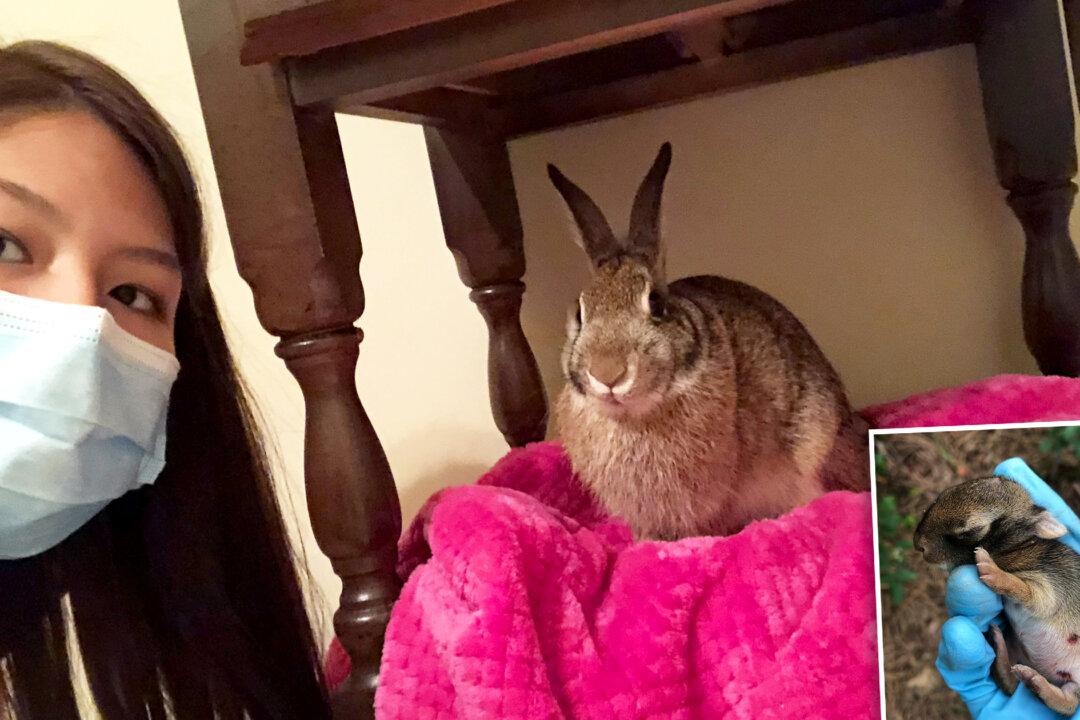A wild rabbit, orphaned as a baby, got a second chance at life when she was taken in by a caring woman. Months later, she reentered the wild but has since shown up again in her rescuer’s backyard, proving that she is thriving.
Jessica Lee, 25, of Marietta, Georgia, found a baby cottontail rabbit, Honey, crawling around on pine straw in her backyard on June 28, 2020.





